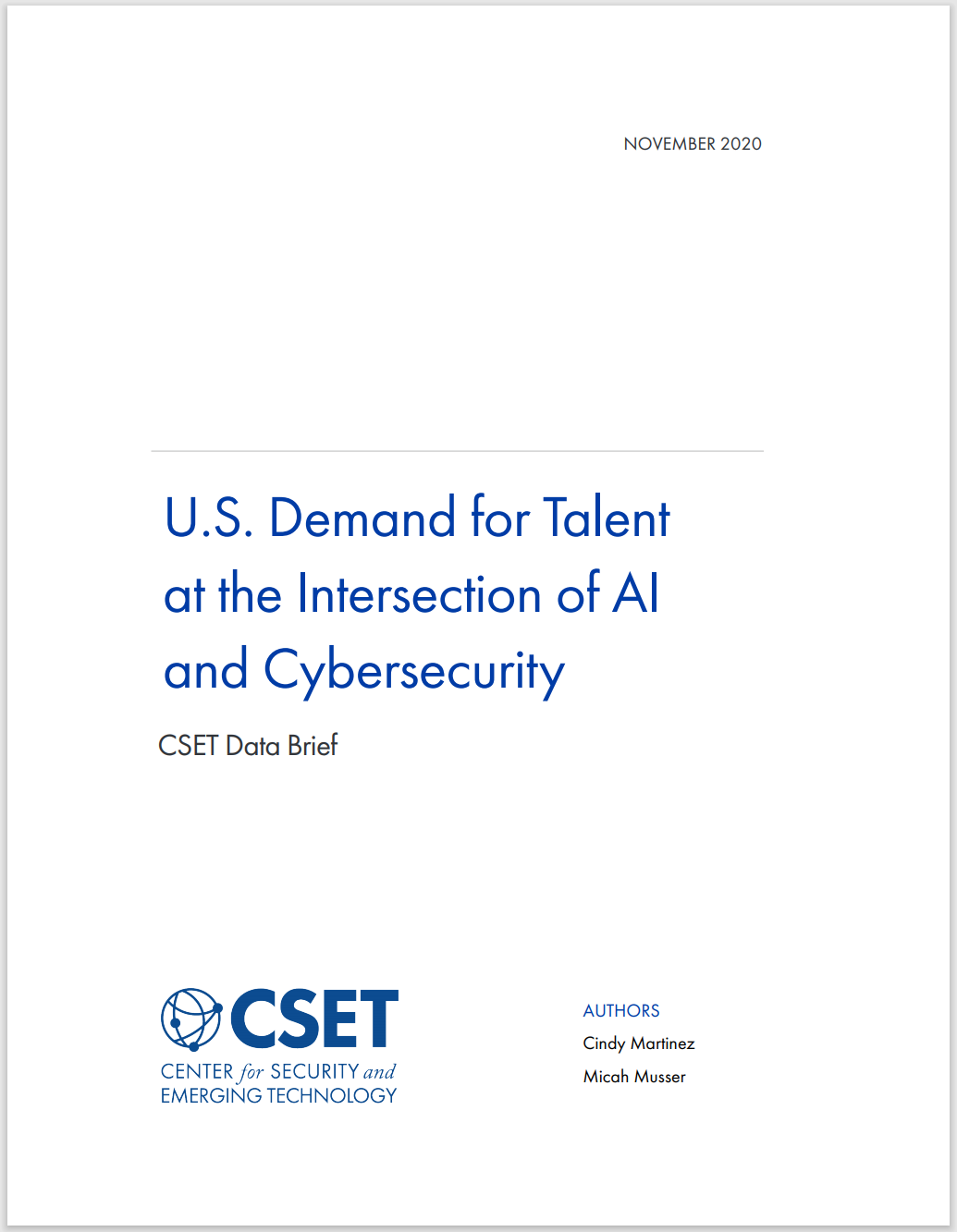Introduction and Summary
Cyberattacks have become more frequent, costly, and adaptive over the last decade. Despite a national demand for cybersecurity experts, the United States faces a growing deficit in skilled workers. It is estimated that the U.S. cybersecurity workforce needs to grow by 62% to meet the demands of businesses today.1 To help close this gap, some organizations are turning to AI to augment overwhelmed cybersecurity teams.2
AI-enabled cybersecurity products are alluring because of their scalability and speed. When they work well, AI systems can generate security alerts based on suspicious behavior, triage potential attacks, and take some initial steps to respond to threats. This frees up analysts to focus on complex, higher priority tasks that require human intervention.
But developing AI-cyber solutions requires a workforce that can understand both cybersecurity issues and the underlying technology of AI. Although some employers may decide to build this talent by hiring distinct teams to specialize separately in AI or cybersecurity, there are benefits to having individuals who have some fluency in both areas. For example, AI engineers building an intrusion detection system will likely benefit if they understand not only the indicators of different attacks, but also what the attacks mean from a practitioner’s perspective. Similarly, cybersecurity practitioners will likely be better positioned to evaluate, utilize, and maintain AI detection systems if they understand their underlying technology.
Because of this, the demand for employees with domain-relevant knowledge of both AI and cybersecurity provides a useful indicator for the overall level of investment and interest in AI-cyber solutions. Tracking the demand for these types of employees can help build a more complete picture of how industry is pursuing AI tools to aid in cybersecurity practice.
This paper uses data from Burning Glass Technologies, which aggregates job postings from more than 45,000 sites, to examine whether the U.S. market is signaling a meaningful shift towards jobs that call for a combination of AI and cyber skills. How many of these jobs are there, where are they located, and what do they look like?
Key takeaways from the data brief include:
- Overall demand for job postings that call for both cyber and AI skills remains low, despite considerable growth from 2010-2019.
- These job postings appear to skew more heavily toward data science roles requesting some familiarity with cybersecurity, rather than cybersecurity roles requesting some familiarity with data science.
- The finance and insurance industry is a main driver for jobs that require a combination of cyber and AI skills.
- Jobs requesting both cyber skills and AI skills are increasingly spread throughout the country, rather than concentrated in states with major AI industries.
Download Full Report
- “Strategies for Building and Growing Strong Cybersecurity Teams” ((ISC)2, 2019), https://www.isc2.org/-/media/ISC2/Research/2019-Cybersecurity-Workforce-Study/ISC2-Cybersecurity-Workforce-Study-2019.ashx?la=en&hash=1827084508A24DD75C60655E243EAC59ECDD4482.
- “Reinventing Cybersecurity with Artificial Intelligence: The New Frontier in Digital Security” (Capgemini Research Institute, July 11, 2019), https://www.capgemini.com/wp-content/uploads/2019/07/AI-in-Cybersecurity_Report_20190711_V06.pdf.
